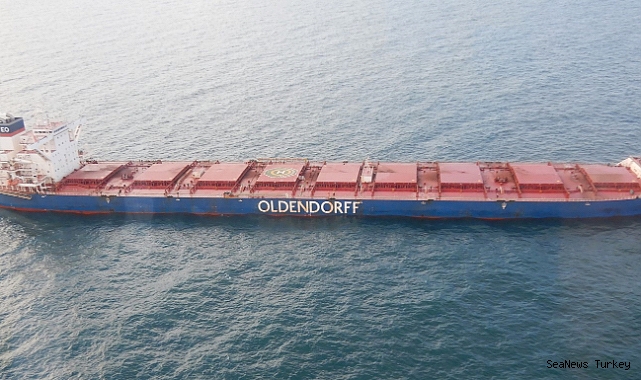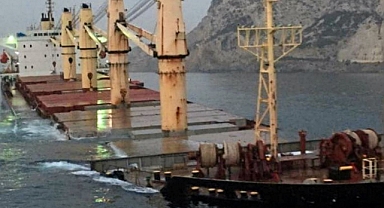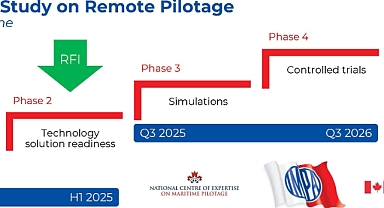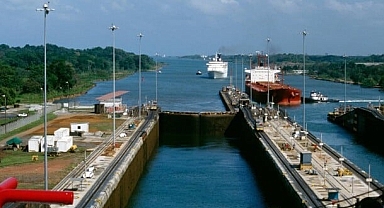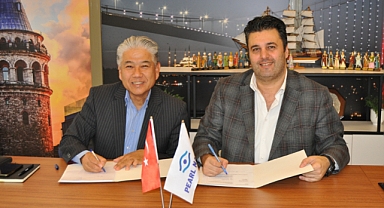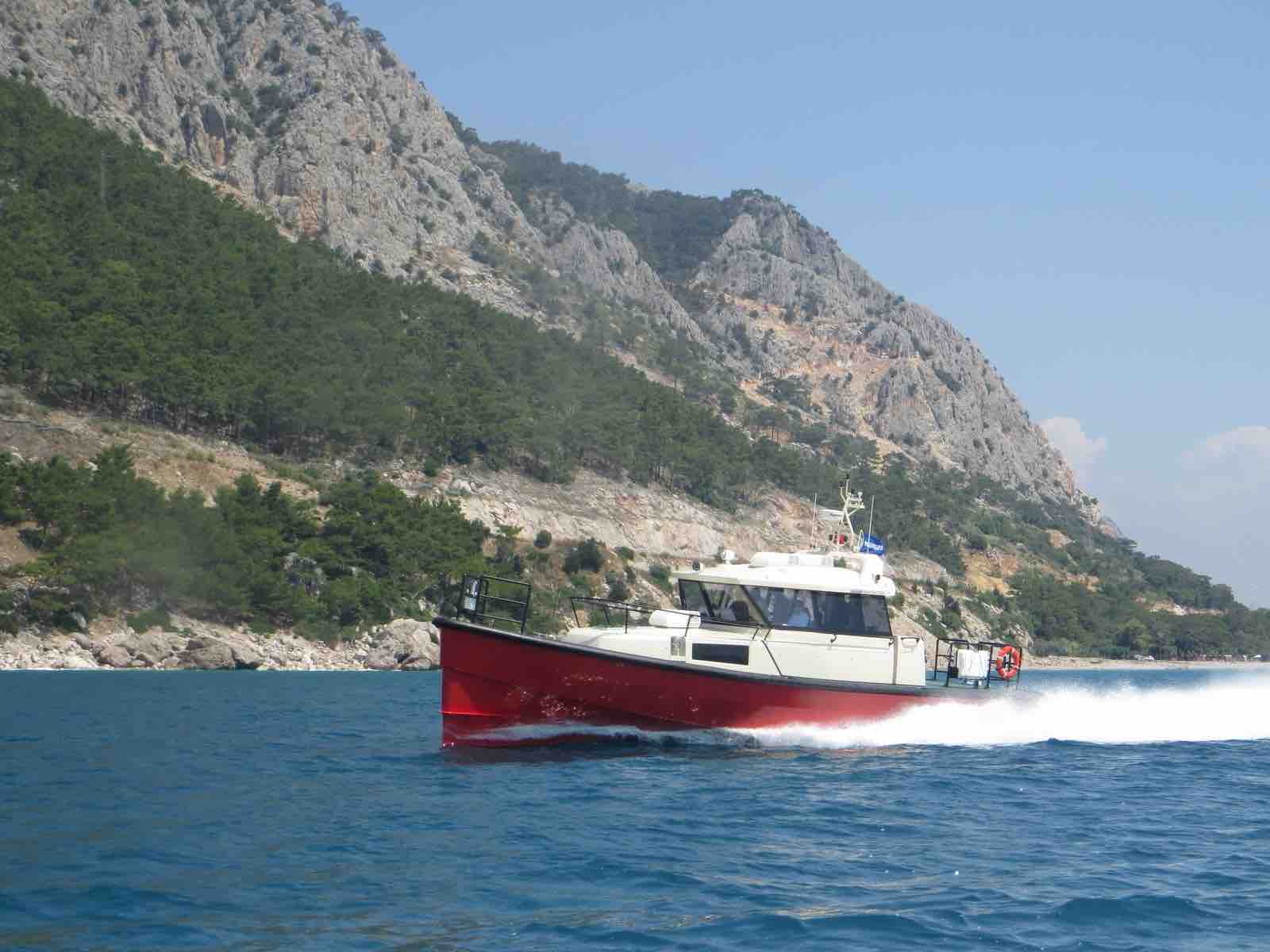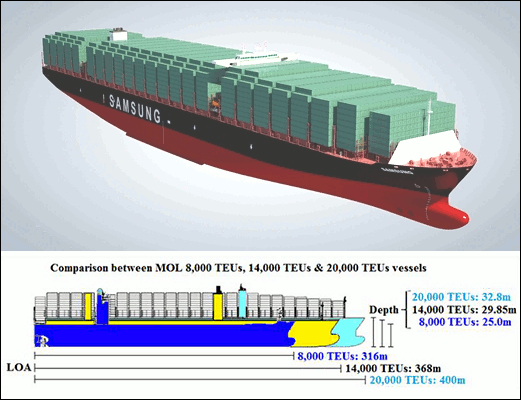Rudder Angle Indicator Failure Leads to Grounding IncidentOn April 9, 2022, the bulk carrier Hagen Oldendorff ran aground shortly after departing from Port Hedland, one of Australia's busiest ports, with a cargo of iron ore. The vessel veered to port and struck the channel's edge due to a failure in the rudder angle indicators on the bridge. Misinterpreting the situation as a "rudder failure," the pilot's corrective actions inadvertently worsened the scenario, according to the Australian Transportation Safety Bureau (ATSB).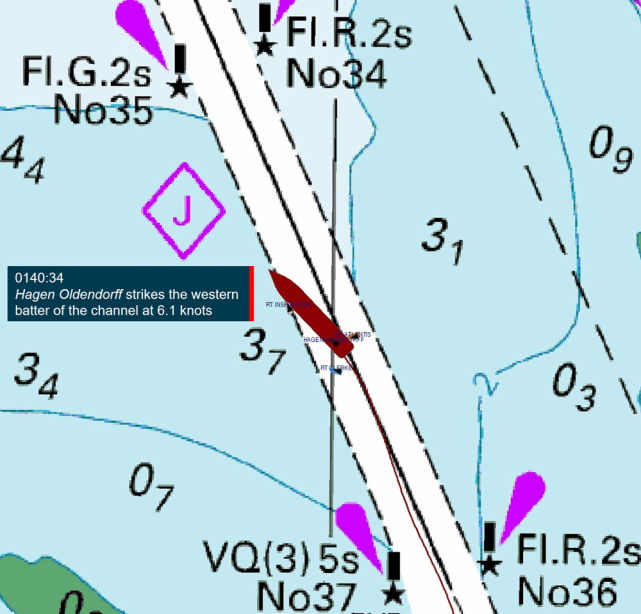 The incident occurred about 45 minutes after the vessel left the port, while navigating the narrow outer channel. At approximately 01:37, the bridge team reported hearing clicking sounds, followed by the abrupt failure of all rudder angle indicators. At the time, the vessel was turning to starboard. To counteract this movement, the pilot ordered 20 degrees to port and instructed the aft tug to pull the stern to starboard. However, interpreting the failure as a rudder malfunction, the pilot took further measures to halt the ship's portward swing, leading to the grounding.The Hagen Oldendorff struck the channel's slope at six knots, causing significant damage to its hull. The collision breached the vessel's first and second ballast tanks, resulting in flooding. Divers later identified two large breaches: one measuring approximately two by three meters and another about one square meter. The hull plating and structural members sustained extensive damage over a 150-meter stretch.Shortly after the grounding, the ship’s master correctly identified the issue with the rudder angle indicators and switched to local steering controls. Additional tugs arrived, assisting the vessel to a safe anchorage for inspection. Temporary repairs were completed by April 18, allowing the ship to proceed to China for drydocking.Technical Findings and RecommendationsThe ATSB investigation revealed that the rudder angle indicators failed due to a short-circuited motor in one of the six units, which tripped a breaker. This single breaker powered all indicators, causing them to go dark simultaneously. The crew did not initially consider the possibility of an indicator failure, interpreting the situation as a complete steering malfunction.ATSB confirmed that Hagen Oldendorff’s bridge equipment met all SOLAS and class safety standards. However, current regulations do not mandate protections against single-point failures, such as breaker trips, nor do they require alarms to notify bridge teams of power loss affecting rudder indicators. The agency recommended collaboration between the vessel’s class society, flag state, port state, and the International Association of Classification Societies (IACS) to address this issue.ConclusionThis incident highlights the need for enhanced redundancy and fault tolerance in critical ship systems. It also underscores the importance of comprehensive training for bridge teams to recognize and respond to equipment failures accurately. While the Hagen Oldendorff has resumed operations, this grounding serves as a reminder of the potential risks associated with single-point failures in maritime operations.For a more detailed analysis, you can watch the video below:
The incident occurred about 45 minutes after the vessel left the port, while navigating the narrow outer channel. At approximately 01:37, the bridge team reported hearing clicking sounds, followed by the abrupt failure of all rudder angle indicators. At the time, the vessel was turning to starboard. To counteract this movement, the pilot ordered 20 degrees to port and instructed the aft tug to pull the stern to starboard. However, interpreting the failure as a rudder malfunction, the pilot took further measures to halt the ship's portward swing, leading to the grounding.The Hagen Oldendorff struck the channel's slope at six knots, causing significant damage to its hull. The collision breached the vessel's first and second ballast tanks, resulting in flooding. Divers later identified two large breaches: one measuring approximately two by three meters and another about one square meter. The hull plating and structural members sustained extensive damage over a 150-meter stretch.Shortly after the grounding, the ship’s master correctly identified the issue with the rudder angle indicators and switched to local steering controls. Additional tugs arrived, assisting the vessel to a safe anchorage for inspection. Temporary repairs were completed by April 18, allowing the ship to proceed to China for drydocking.Technical Findings and RecommendationsThe ATSB investigation revealed that the rudder angle indicators failed due to a short-circuited motor in one of the six units, which tripped a breaker. This single breaker powered all indicators, causing them to go dark simultaneously. The crew did not initially consider the possibility of an indicator failure, interpreting the situation as a complete steering malfunction.ATSB confirmed that Hagen Oldendorff’s bridge equipment met all SOLAS and class safety standards. However, current regulations do not mandate protections against single-point failures, such as breaker trips, nor do they require alarms to notify bridge teams of power loss affecting rudder indicators. The agency recommended collaboration between the vessel’s class society, flag state, port state, and the International Association of Classification Societies (IACS) to address this issue.ConclusionThis incident highlights the need for enhanced redundancy and fault tolerance in critical ship systems. It also underscores the importance of comprehensive training for bridge teams to recognize and respond to equipment failures accurately. While the Hagen Oldendorff has resumed operations, this grounding serves as a reminder of the potential risks associated with single-point failures in maritime operations.For a more detailed analysis, you can watch the video below:
 The incident occurred about 45 minutes after the vessel left the port, while navigating the narrow outer channel. At approximately 01:37, the bridge team reported hearing clicking sounds, followed by the abrupt failure of all rudder angle indicators. At the time, the vessel was turning to starboard. To counteract this movement, the pilot ordered 20 degrees to port and instructed the aft tug to pull the stern to starboard. However, interpreting the failure as a rudder malfunction, the pilot took further measures to halt the ship's portward swing, leading to the grounding.The Hagen Oldendorff struck the channel's slope at six knots, causing significant damage to its hull. The collision breached the vessel's first and second ballast tanks, resulting in flooding. Divers later identified two large breaches: one measuring approximately two by three meters and another about one square meter. The hull plating and structural members sustained extensive damage over a 150-meter stretch.Shortly after the grounding, the ship’s master correctly identified the issue with the rudder angle indicators and switched to local steering controls. Additional tugs arrived, assisting the vessel to a safe anchorage for inspection. Temporary repairs were completed by April 18, allowing the ship to proceed to China for drydocking.Technical Findings and RecommendationsThe ATSB investigation revealed that the rudder angle indicators failed due to a short-circuited motor in one of the six units, which tripped a breaker. This single breaker powered all indicators, causing them to go dark simultaneously. The crew did not initially consider the possibility of an indicator failure, interpreting the situation as a complete steering malfunction.ATSB confirmed that Hagen Oldendorff’s bridge equipment met all SOLAS and class safety standards. However, current regulations do not mandate protections against single-point failures, such as breaker trips, nor do they require alarms to notify bridge teams of power loss affecting rudder indicators. The agency recommended collaboration between the vessel’s class society, flag state, port state, and the International Association of Classification Societies (IACS) to address this issue.ConclusionThis incident highlights the need for enhanced redundancy and fault tolerance in critical ship systems. It also underscores the importance of comprehensive training for bridge teams to recognize and respond to equipment failures accurately. While the Hagen Oldendorff has resumed operations, this grounding serves as a reminder of the potential risks associated with single-point failures in maritime operations.For a more detailed analysis, you can watch the video below:
The incident occurred about 45 minutes after the vessel left the port, while navigating the narrow outer channel. At approximately 01:37, the bridge team reported hearing clicking sounds, followed by the abrupt failure of all rudder angle indicators. At the time, the vessel was turning to starboard. To counteract this movement, the pilot ordered 20 degrees to port and instructed the aft tug to pull the stern to starboard. However, interpreting the failure as a rudder malfunction, the pilot took further measures to halt the ship's portward swing, leading to the grounding.The Hagen Oldendorff struck the channel's slope at six knots, causing significant damage to its hull. The collision breached the vessel's first and second ballast tanks, resulting in flooding. Divers later identified two large breaches: one measuring approximately two by three meters and another about one square meter. The hull plating and structural members sustained extensive damage over a 150-meter stretch.Shortly after the grounding, the ship’s master correctly identified the issue with the rudder angle indicators and switched to local steering controls. Additional tugs arrived, assisting the vessel to a safe anchorage for inspection. Temporary repairs were completed by April 18, allowing the ship to proceed to China for drydocking.Technical Findings and RecommendationsThe ATSB investigation revealed that the rudder angle indicators failed due to a short-circuited motor in one of the six units, which tripped a breaker. This single breaker powered all indicators, causing them to go dark simultaneously. The crew did not initially consider the possibility of an indicator failure, interpreting the situation as a complete steering malfunction.ATSB confirmed that Hagen Oldendorff’s bridge equipment met all SOLAS and class safety standards. However, current regulations do not mandate protections against single-point failures, such as breaker trips, nor do they require alarms to notify bridge teams of power loss affecting rudder indicators. The agency recommended collaboration between the vessel’s class society, flag state, port state, and the International Association of Classification Societies (IACS) to address this issue.ConclusionThis incident highlights the need for enhanced redundancy and fault tolerance in critical ship systems. It also underscores the importance of comprehensive training for bridge teams to recognize and respond to equipment failures accurately. While the Hagen Oldendorff has resumed operations, this grounding serves as a reminder of the potential risks associated with single-point failures in maritime operations.For a more detailed analysis, you can watch the video below: 


